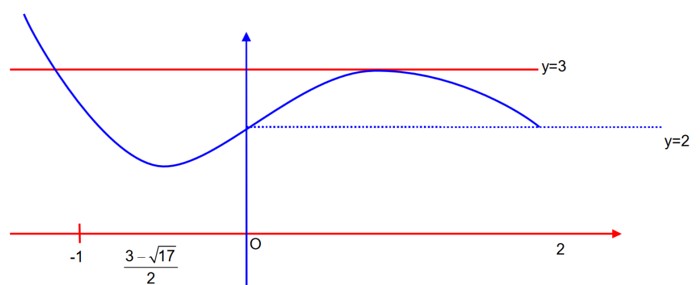The area (in sq. units) of the largest rectangle ABCD whose vertices A and B lie on the x-axis and vertices C and D lie on the parabola, y = x² – 1 below the x-axis, is:
The area (in sq. units) of the largest rectangle ABCD whose vertices A and B lie on the x-axis and vertices C and D lie on the parabola, y = x² – 1 below the x-axis, is:
Option 1 -
4/(3√3)
Option 2 -
1/(3√3)
Option 3 -
2/(3√3)
Option 4 -
8/(3√3)
-
1 Answer
-
Correct Option - 1
Detailed Solution:A (α, 0), B (-α, 0)
⇒ D (α, α² − 1)
Area (ABCD) = (AB) (AD)
⇒ S = (2α) (1 − α²) = 2α – 2α³
dS/dα = 2 - 6α²
= 0 ⇒ α² = 1/3
⇒ α = 1/√3
Area = 2α – 2α³ = 2/√3 - 2/ (3√3)
= 4/ (3√3)
Similar Questions for you
option (C) is incorrect, there will be minima.

absolute minimum
absolute maximum = 3
If f(x) has maximum value at x = 1 then
……..(i)
……..(ii)
From (i) and (ii) we get
OP2 = x2 = y2
y = ex, y’ = ex,
slope of normal =
By hit and trial we get
Taking an Exam? Selecting a College?
Get authentic answers from experts, students and alumni that you won't find anywhere else
Sign Up on ShikshaOn Shiksha, get access to
- 65k Colleges
- 1.2k Exams
- 679k Reviews
- 1800k Answers
